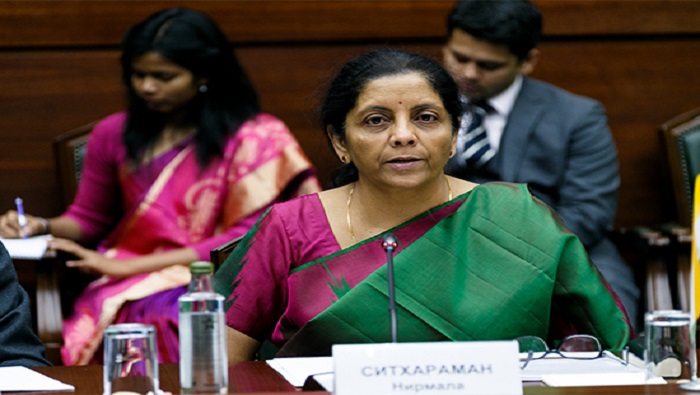
New Delhi: Indian Finance Minister Nirmala Sitharaman on Saturday announced budgetary allocations for the Financial Year 2020-21 (April 2020-March 2021) for different sectors, primarily focusing on giving a major boost to overall infrastructure, doubling farmers income, raising middle-income class' purchasing power, and women safety.
This was the first Union Budget of Prime Minister Narendra Modi's second successive government, formed in May last year.
Soon after the budgetary proposals were announced by the Finance Minister, the stock markets crashed, even as the "Sensex" (Bombay Stock Exchange) tumbled by 988 points, whereas "Nifty" (National Stock Exchange) fell by 300 points. This showed that the Union Budget didn't meet the corporate world's expectations.
The budgetary proposals would now be discussed among the country's lawmakers and passed in the parliament. Once passed by the parliament during the ongoing Budget Session, the final budget provisions would be implemented with effect from April 1.
During her Budget Speech in Indian parliament's lower house Lok Sabha, Sitharaman also announced major reliefs for the middle-income class, or the salaried class, by reducing Income Tax rates for individuals in different slabs.
The reduction in Income Tax rates in case of Individuals is being seen as an attempt by the central government to increase the purchasing power among the consumers, thereby boosting the overall consumption demand.
In a bid to improve the economic condition of farmers, the Finance Minister announced a 16 points action plan to double farmers income by 2022. She allocated over 214 billion U.S. dollars under the head Agriculture Credit Target for giving farm loans.
Besides, over 40 billion U.S. dollars has been allocated for agriculture and allied activities, irrigation and rural development.
For the farmers whose agriculture land had turned barren, the central government would provide equipment at subsidised rates for producing solar energy.
According to one of the budgetary provisions announced Saturday, the country's milk processing capacity would be doubled by 2025.
Carrying on with its programs to improve nutritional levels of children and lactating mothers across the country, a separate allocation of approximately 5.1 billion U.S. dollars has been made for the forthcoming year.
With a view to boost the business sector, the central government made an outlay of 3.9 billion U.S. dollars for "Industry and Commerce" sector.
Sitharaman also announced a new scheme that provides high insurance cover for exporters and reduce premium for small exporters.
Reacting to the proposals announced in the Union Budget, president of the Federation of Indian Export Organisations (FIEO) Sharad Kumar Saraf said that the Budget had attempted at structural changes in agriculture, horticulture and pisciculture through 16 Action Points, to make India a major player in agro and allied sectors exports in medium to long term basis, besides simultaneously doubling our farmers income.
"The focus on standards and quality will facilitate exports of quality products from India fetching better unit realization and enabling Indian manufacturers to meet the technical standards, barriers erected by many of our trading partners, while also stemming cheap quality imports thereby protecting the domestic industry," he added in a statement issued to the media.
India's exports had contracted for fifth straight month by 1.8 percent in December 2019 to 27.36 billion U.S. dollars, and imports declined 8.9 percent to 357.39 billion U.S. dollars, leaving a trade deficit of 118.10 billion U.S. dollars.
Budgetary provisions were also allocated to roads and other transport infrastructure, women-specific programs, Internet connectivity and other fields.